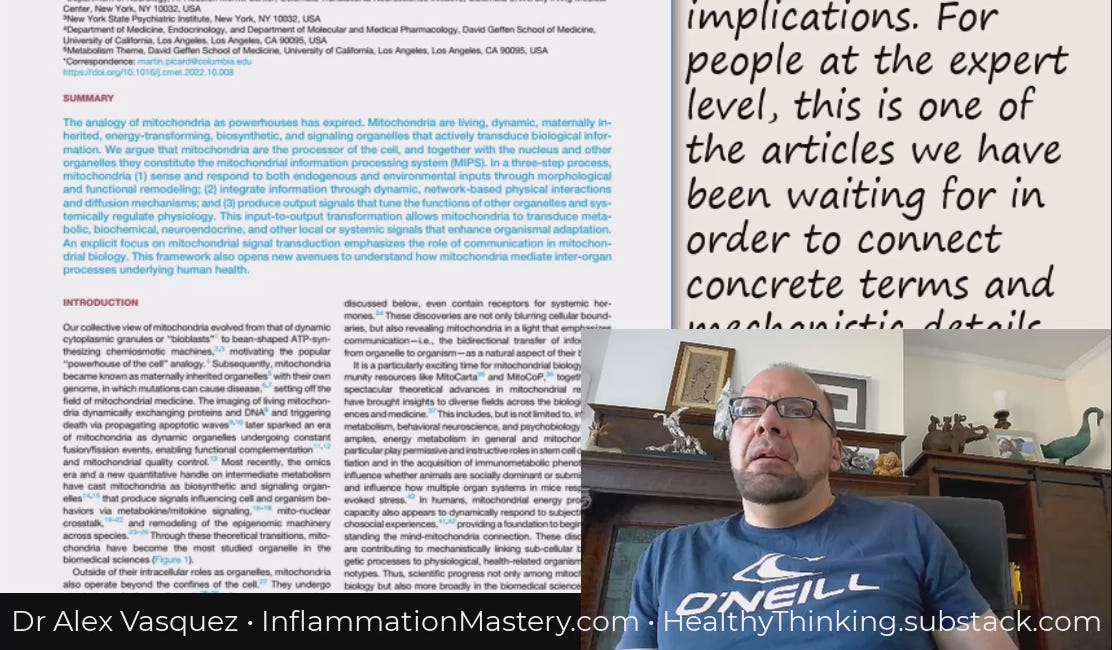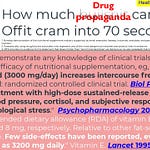Note: This section is excerpted from the upcoming 5th Edition of my migraine protocol, which was most recently published in Inflammation Mastery 4th Edition (2016). I do not anticipate what I consider major changes in the protocol although obviously some new perspectives and interventions will be included. We are obviously at a time when we need a paradigm shift in the management of chronic pain conditions.
Our appreciation of the role of mitochondrial dysfunction in various diseases has increased tremendously over the past few years, as is to be expected with the progressive detailing of cellular/molecular biology; paradoxically, the safety and effectiveness of our clinical interventions outpaced important findings in mitochondrial biology, most of which were more of intellectual/abstract interest than of clinical importance, eg, moving from a static to dynamic model of the electron transport chain (ETC) with diet-induced ETC supercomplexes is interesting but does not change our interventions, although it does help explain them better.
Neustadt and Pieczenik’s 2007 “Mitochondrial dysfunction and molecular pathways of disease”[1] and their 2008 “Medication-induced mitochondrial damage and disease”[2] were important for raising conceptual awareness, and the 2011 review by Green et al[3] “Mitochondria and the autophagy-inflammation-cell death axis in organismal aging” was another conceptual quantum leap, but again without direct clinical translation. Starting with my 2013 and 2014 interviews and publications[4], I decided to construct the bridge that would span the gap between biology and therapeutics in Mitochondrial Nutrition and Endoplasmic Reticulum Stress in Primary Care and “Mitochondrial Medicine Arrives to Prime Time in Clinical Care: Nutritional Biochemistry and Mitochondrial Hyperpermeability ("Leaky Mitochondria") Meet Disease Pathogenesis and Clinical Interventions” published in Integrative Medicine 2014 August[5] and available online ncbi.nlm.nih.gov/pmc/articles/PMC4566442. The most complete version of that conceptualization, structure, sequence, and clinical protocol was published in Inflammation Mastery 4th Edition (2016) and will be updated/gilded in subsequent and derivative works as necessary. My 2-hour CME presentation "Mitochondrial Nutrition and Beyond" from the 2013 International Conference on Human Nutrition and Functional Medicine provides a competent conceptual-clinical overview and is available online: see video embedded above.
One would be justified in surveying the newer literature and concluding irreverently that “the rest is [only] details”; however, two discoveries/clarifications in mitochondrial science are particularly noteworthy. First, our deepening appreciation of the importance of mitochondrial (dysfunctional) signaling is not merely molecular trivia because MitoDysfxnSignaling clearly has important clinical implications in helping us understand how MitoDysfxn concludes with more than mere ATP underproduction and ROS overproduction; MitoDysfxnSignaling explains how MitoDysfxn changes cell behavior and genetic expression and thereby extends and complicates our understanding of how MitoDysfxn applies to a widening range of conditions in clinical practice—see my video discussion of Picard and Shirihai’s 2022 “Mitochondrial signal transduction”[6] at
Second, deepening our appreciation of the devastating impact of inflammation on mitochondria (Russell, Doll et al, J Clin Cell Immunol 2016) which then creates a vicious cycle with additional inflammation via ROS and MitoDysfxnSignaling clearly has clinical implications and also helps us direct our treatments at liberating the pyruvate dehydrogenase complex (PDC) and Krebs/citrate cycle to focus on enhancing ETC function while it is crippled by inflammatory cytokines, especially TNFa; this has clear and important implications for the treatment of cancer, neuroinflammation, and (post)viral syndromes. As such, my updated definition of MitoDysfxn includes these five components:




















